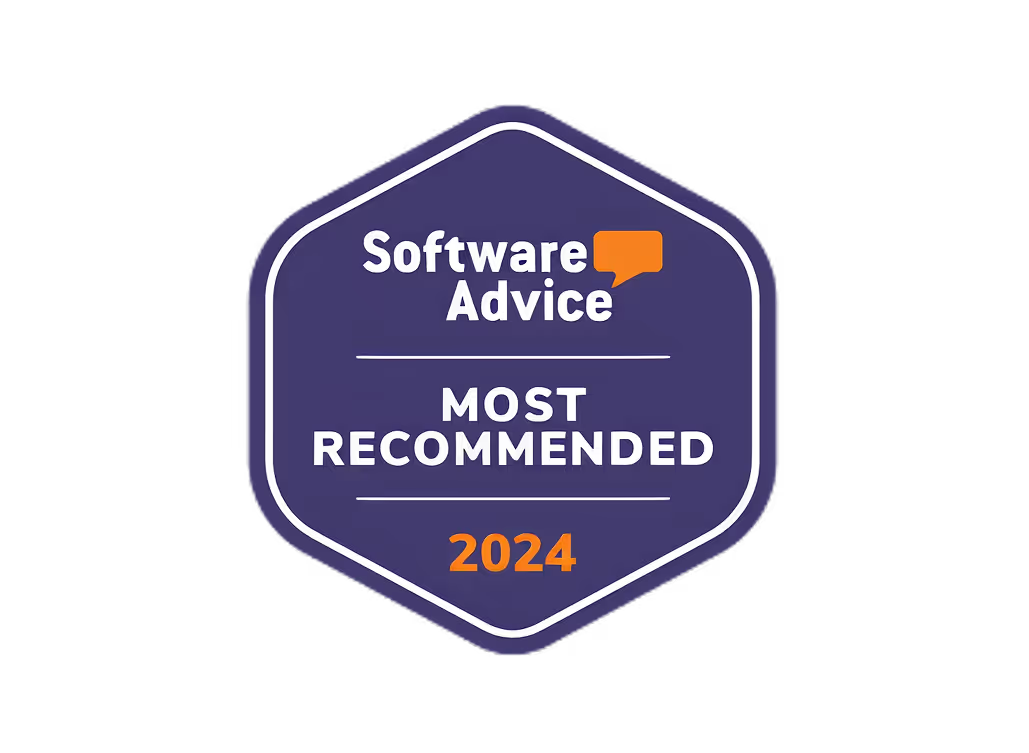Cross-Device Video Tracking: Best Practices & Analytics

Cross-device video tracking allows advertisers to monitor how users engage with video ads across multiple devices like smartphones, tablets, and desktops. By understanding user behavior across devices, advertisers can deliver more targeted ads and improve campaign effectiveness.
Related video from YouTube
Key Takeaways
- Tracking Methods: Deterministic tracking uses unique identifiers like email addresses for high accuracy, while probabilistic tracking uses algorithms and statistical models for better scalability.
- Data Integration: Combine first-party data from your website/app with third-party data from providers using Data Management Platforms (DMPs) to create a complete user profile.
- Campaign Planning: Define your target audience, set measurable goals, and choose the right devices and platforms.
- Audience Targeting: Leverage first-party data, device graphs, and A/B testing for personalized ad targeting across devices.
- Measurement & Optimization: Use cross-device attribution models, monitor KPIs like reach and conversions, and leverage AI/machine learning for continuous optimization.
Quick Comparison: Tracking Methods
MethodDescriptionProsConsDeterministicUses unique identifiers like emails to match user activityHigh accuracy, easy to implementLimited scalability, relies on user loginProbabilisticUses algorithms to infer connections between device dataScalable, cost-effectiveLower accuracy, may not work for small datasetsHybridCombines deterministic and probabilistic approachesBalances accuracy and scalabilityComplex implementation, requires significant resources
Quick Comparison: Attribution Models
ModelDescriptionLast-click attributionAssigns credit to the last ad clicked before conversionFirst-click attributionAssigns credit to the first ad clicked before conversionLinear attributionAssigns equal credit to each ad touchpointData-driven attributionUses machine learning to assign credit based on actual impact
Understanding Multi-Device Video Viewing
Analyze the shift towards multi-device video consumption and its impact on advertisers. Explore the role of various devices in cross-device video viewing, including their usage patterns.
Viewing Habits Across Devices
Consumers' viewing habits have changed a lot in recent years. With more devices available, users can watch video content anywhere, anytime. This has led to a fragmented viewing experience, where users switch between devices. For example, a user might start watching a video on their smartphone during their morning commute and then continue watching it on their tablet or desktop at home.
According to a report by the Mobile Marketing Association, 80% of millennials shopping online follow a cross-device path to purchase. This shows the importance of understanding cross-device viewing habits to deliver targeted ads to the right audience.
Connected TV and Over-The-Top Platforms
Connected TV (CTV) and Over-The-Top (OTT) platforms have changed how users consume video content. CTV devices, such as smart TVs and streaming devices, allow users to watch video content on the big screen. OTT platforms, like Netflix and Hulu, offer a range of video content options.
CTV and OTT platforms have become very popular. According to a report by eMarketer, 70% of US households own a CTV device. This shift towards CTV and OTT platforms means advertisers need to adjust their strategies to reach their target audience on these devices.
Mobile Devices in Cross-Device Viewing
Mobile devices play a big role in cross-device video viewing. With most users accessing video content on their mobile devices, advertisers need to optimize their ads for mobile to reach their target audience.
According to a report by Cisco, mobile devices will account for 72% of all internet traffic by 2025. This shows the importance of mobile devices in cross-device video viewing and the need for advertisers to develop mobile-first strategies to reach their target audience.
Tracking Methods
Tracking users across devices is key for cross-device video tracking. There are two main methods: deterministic and probabilistic tracking. Each has its pros and cons, and knowing these differences is important for effective tracking.
Deterministic vs. Probabilistic Tracking
Tracking MethodDescriptionProsConsDeterministicUses unique identifiers like email addresses or login credentials to link devices to a single user.Very accurate, good for large companies with big user databases.Limited reach, needs users to log in on multiple devices.ProbabilisticUses algorithms and statistical models to guess which devices belong to the same user based on non-personal data like IP addresses, device types, and cookies.More scalable for smaller companies, can reach more users.Less accurate, may result in wrong matches.
Deterministic tracking is more accurate but needs users to log in on multiple devices. Probabilistic tracking is more scalable but less accurate. The choice depends on the company's size, data, and target audience.
Device Graphs and Identity Resolution
Device graphs help in identifying users across multiple devices. A device graph is a database that stores information about devices and their connections to users. By analyzing device graphs, companies can create a single user profile across multiple devices.
When choosing a third-party data provider, consider:
- Data quality and accuracy
- Device graph size and coverage
- Integration with existing systems
- Compliance with privacy regulations
Privacy and Compliance
Privacy compliance is important in cross-device tracking. Companies must get user consent, offer clear opt-out options, and follow regulations like GDPR and CCPA. Not doing so can lead to legal issues and harm the brand's reputation.
sbb-itb-606b7a1
Data Collection and Integration
Data collection and integration are key steps in cross-device tracking. To track users across devices, you need to gather and combine data from various sources. Let's look at strategies for collecting and integrating data effectively.
First-Party Data Collection
First-party data is gathered directly from your website, app, or other owned channels. This data is specific to your audience and helps you understand their behavior across devices. Tools like Google Analytics, cookies, or SDKs can help collect this data. Always get user consent and comply with privacy regulations like GDPR and CCPA.
Consider the following when collecting first-party data:
- Define your goals: Know what data you need to collect to meet your tracking goals.
- Choose the right tools: Select tools that help you collect and integrate data effectively.
- Ensure user consent: Get explicit user consent and provide clear opt-out options to comply with privacy laws.
Third-Party Data Integration
Third-party data comes from external sources like data providers or social media platforms. Combining this with your first-party data gives a fuller picture of your audience. When integrating third-party data, consider:
- Evaluate data quality: Check the accuracy and reliability of third-party data.
- Choose the right partners: Select data providers that align with your goals and comply with privacy laws.
- Integrate data effectively: Use data management platforms (DMPs) or other tools to combine third-party data with your first-party data.
Data Management Platforms
Data management platforms (DMPs) help you collect, organize, and integrate data from various sources. They create a single user profile across multiple devices, making tracking more effective. When choosing a DMP, consider:
CriteriaDescriptionData quality and accuracyEnsure the DMP can handle large datasets and provide accurate user profiles.Integration capabilitiesChoose a DMP that can integrate with your existing systems and tools.Scalability and flexibilitySelect a DMP that can grow with your business and adapt to changing data needs.
Analyzing Cross-Device Video Campaigns
Delve into key performance indicators, attribution models, and reporting tools essential for analyzing cross-device video campaigns.
Key Performance Indicators
When analyzing cross-device video campaigns, it's crucial to track the right metrics to measure success. Key performance indicators (KPIs) help you evaluate the effectiveness of your campaigns and identify areas for improvement. Some essential KPIs for cross-device video campaigns include:
- Reach: The number of unique users exposed to your ads across devices.
- Frequency: The average number of times a user is exposed to your ads across devices.
- Impressions: The total number of ad views across devices.
- Click-through rate (CTR): The percentage of users who click on your ads after seeing them.
- Conversion rate: The percentage of users who complete a desired action (e.g., purchase, sign-up) after clicking on your ads.
- Cost per action (CPA): The cost of achieving a desired action (e.g., conversion, sale).
Attribution Models
Attribution models help you assign credit to each touchpoint in the user journey, allowing you to understand how your ads contribute to conversions. Common attribution models for cross-device video campaigns include:
Attribution ModelDescriptionLast-click attributionAssigns credit to the last ad clicked before conversion.First-click attributionAssigns credit to the first ad clicked before conversion.Linear attributionAssigns equal credit to each ad touchpoint in the user journey.Data-driven attributionUses machine learning to assign credit to each ad touchpoint based on its actual impact on conversions.
When choosing an attribution model, consider your campaign goals, target audience, and the complexity of your user journey.
Reporting and Visualization
Effective reporting and visualization tools help you make sense of your cross-device video campaign data. Look for tools that provide:
- Real-time reporting: Up-to-the-minute data on campaign performance.
- Customizable dashboards: Tailor your reporting to focus on key metrics and KPIs.
- Data visualization: Interactive charts, graphs, and heatmaps to help you identify trends and insights.
- Device-level reporting: Breakdowns of performance by device type (e.g., mobile, desktop, tablet).
- Cross-device tracking: Ability to track users across devices and assign credit to each touchpoint.
Best Practices and Optimization
Campaign Planning
To make your cross-device video campaigns successful, plan carefully. Follow these steps:
- Define your target audience: Know their demographics, interests, and behaviors to create relevant ads.
- Set measurable goals: Establish Key Performance Indicators (KPIs) like reach, frequency, impressions, and conversions.
- Choose the right devices and platforms: Pick devices and platforms that match your audience and goals.
Audience Targeting and Personalization
Targeting and personalizing your ads can boost your campaign's impact. Consider these strategies:
- Leverage first-party data: Use your own data to create targeted audiences and personalize ads based on user behavior.
- Use device graphs and identity resolution: Connect user identities across devices for accurate targeting and personalization.
- Employ A/B testing and experimentation: Continuously test and optimize ad creative, targeting, and personalization.
Measurement and Optimization
To improve your cross-device video campaigns, measure and analyze performance data regularly. Follow these best practices:
- Use cross-device attribution models: Employ models that account for cross-device user behavior, like data-driven attribution.
- Monitor and optimize KPIs: Track and analyze KPIs to find areas for improvement.
- Leverage AI and machine learning: Use AI and machine learning to automate optimization and predict user behavior.
Conclusion
Key Takeaways
This guide has covered the best practices and insights for cross-device video tracking. Here's a quick recap:
- Understand multi-device viewing habits: Know how users switch between devices.
- Choose the right tracking methods: Use deterministic or probabilistic tracking based on your needs.
- Integrate data collection and analysis: Combine first-party and third-party data for a complete view.
- Plan your campaigns: Define your audience, set goals, and choose the right platforms.
- Target and personalize: Use data to create targeted and personalized ads.
- Measure and optimize: Track KPIs and use attribution models to improve your campaigns.
Future Trends
Looking ahead, expect advancements in:
- Machine learning and AI: Better attribution models.
- Connected TV and OTT platforms: More advanced tracking and targeting.
- Data privacy and compliance: More secure and transparent tracking methods.
Staying Up-to-Date
To keep up with changes in cross-device video tracking:
- Attend webinars, conferences, and workshops: Stay informed about the latest trends.
- Participate in online forums and discussions: Share knowledge and learn from others.
Additional Resources
Glossary
Here are some key terms to help you understand cross-device video tracking:
- Cross-device tracking: Monitoring user behavior across multiple devices like smartphones, tablets, and desktops.
- Deterministic tracking: Using unique identifiers, such as login information, to match user activity across devices.
- Probabilistic tracking: Using statistical models to infer connections between device data.
- Device graph: A visual representation of device connections, helping to identify relationships between devices.
Recommended Tools
To effectively implement cross-device video tracking, consider these tools:
ToolDescriptionGoogle AnalyticsTracks website and app data.Adobe AnalyticsMeasures cross-device behavior.Facebook AnalyticsTracks user behavior across Facebook, Instagram, and others.KochavaMobile attribution and analytics platform for cross-device campaigns.
Comparison Tables
When choosing a tracking method or attribution model, it's important to understand the differences. Here's a comparison to help you decide:
Tracking MethodologyDescriptionAdvantagesDisadvantagesDeterministicUses unique identifiers to match user activityHigh accuracy, easy to implementLimited scalability, relies on user login informationProbabilisticUses statistical models to infer connectionsScalable, cost-effectiveLower accuracy, may not work for small datasetsHybridCombines deterministic and probabilistic approachesBalances accuracy and scalabilityComplex implementation, requires significant resources
These resources will help you understand cross-device video tracking better and make informed decisions for your marketing campaigns.
FAQs
What is cross-device Analytics?
Cross-Device Analytics (CDA) shifts the focus from devices to people. It helps analysts see how users interact across different browsers, devices, or apps.
How does cross-device targeting work?
Cross-device targeting uses cross-device tracking to identify users on different devices. There are two main methods:
MethodDescriptionDeterministicUses unique identifiers like email addresses to match users across devices.ProbabilisticUses algorithms to guess which devices belong to the same user based on data like IP addresses and cookies.
Both methods aim to identify users across devices for better ad targeting.

















